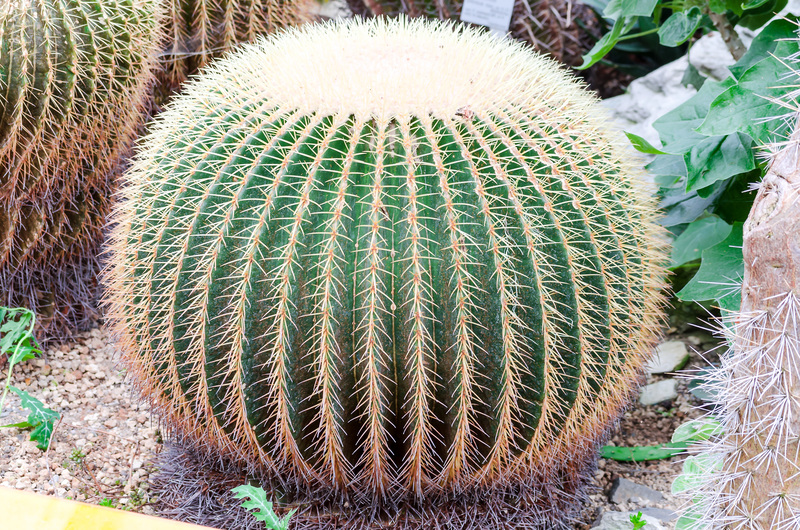Beginner's Guide to Flawless Orchid Care
Posted on 03/07/2025
Beginner's Guide to Flawless Orchid Care
Orchids have captivated plant lovers worldwide with their striking beauty, unusual shapes, and vibrant colors. But for novice growers, these stunning flowers can seem daunting to care for. Welcome to your beginner's guide to flawless orchid care. Whether you're bringing home your very first phalaenopsis or adding to an expanding collection, this article will equip you with the knowledge and confidence to help orchids flourish.

Understanding Orchids: A Brief Introduction
Before diving into the practical steps of orchid maintenance, it's crucial to understand a bit about your plant. Orchids belong to the family Orchidaceae, one of the largest plant families, with over 25,000 species. The most common orchids found in homes include:
- Phalaenopsis (Moth Orchid)
- Dendrobium
- Cattleya
- Oncidium
- Vanda
Phalaenopsis orchids are particularly famous for their ease of care and frequent blooms, making them ideal for beginner orchid keepers. Whether you opt for the popular moth orchid or a more exotic variety, these tips apply broadly to most household orchids.
Choosing the Right Orchid for Your Home
For those new to orchid cultivation, selecting the right type is half the battle. Here's how to make an informed choice:
- Phalaenopsis orchids are resilient and tolerate indoor conditions well.
- Dendrobium orchids offer a range of colors but may need slightly more care.
- If you have bright, indirect sunlight, Cattleya orchids might be suitable due to their vibrant and fragrant blooms.
Ask your local nursery for guidance, and start with one healthy plant to build your orchid care skills before branching out.
Key Elements of Flawless Orchid Care
1. Orchid Light Requirements
Orchids differ from typical houseplants in their preference for light. The key to healthy orchid growth is bright, indirect light. Too little, and your plant may refuse to bloom; too much, and its leaves could scorch.
- East-facing windows are ideal, providing gentle morning sunlight.
- South-facing windows work well but may need a sheer curtain to diffuse direct rays.
- If natural light is limited, supplement with grow lights positioned 6-12 inches above the plant.
Indicators of correct lighting include:
- Healthy, green leaves: medium to bright green, not dark green (too little light) or yellowish-green (too much light).
- Regular flowering cycles: A well-lit orchid will reward you with timely blooms.
2. Proper Watering Practices
Perhaps the most challenging aspect for new orchid owners is mastering orchid watering. Unlike most tropical houseplants, orchids are epiphytes (air plants) in the wild, growing on trees, not in soil. Their roots need both moisture and air.
Watering rules for orchids:- Water thoroughly, but let the potting medium dry out between watering.
- Avoid letting orchids sit in standing water.
- Use tepid, distilled, or rainwater when available, as tap water may contain chemicals that harm sensitive roots.
- In general, water once a week in mild climates and more frequently in dry or hot environments.
Tip: The best schedule for watering orchids is to check the potting media with your finger; if it feels dry about an inch down, it's time to water.
3. Humidity and Airflow for Orchid Health
Orchids thrive in moderate to high humidity. Indoor environments, especially in winter, can be dry. Keep your orchids healthy by following these tips:
- Maintain humidity levels between 40-60%.
- Place a humidity tray (a shallow tray filled with pebbles and water) beneath your orchid pot but ensure the pot isn't sitting directly in water.
- Group orchids together to create a microclimate of higher humidity.
- Ensure good airflow around the plant to prevent fungal and bacterial infections.
- Consider an electric humidifier in dry climates.
4. Feeding: Orchid Fertilizer Guide
Orchids require nutrients to support their unique growth habits and blooms. Use a balanced, water-soluble orchid fertilizer (commonly labeled 20-20-20) at one-quarter strength.
- Fertilize every 1-2 weeks during active growth (spring and summer).
- Reduce feeding during dormant periods (fall and winter).
- Always fertilize after watering to avoid burning the roots.
Remember: Over-fertilizing does more harm than good. The phrase "weakly, weekly" is a great rule for feeding orchids safely.
5. Potting and Repotting: Choosing the Right Medium
Unlike typical potted plants, most orchids are grown in bark, sphagnum moss, or a special mix. Proper potting material is essential for optimal root health.
- Bark mixes offer superior drainage and air for roots.
- Moss retains more moisture--ideal for dry homes, but be careful not to overwater.
- Repot every 1-2 years or if the media breaks down and becomes soggy.
When repotting:
- Always choose a container with plenty of drainage holes.
- Gently remove dead or rotten roots before placing the orchid in fresh medium.
How to Make Orchids Bloom and Rebloom
The joy of orchid ownership is in witnessing their beautiful blooms. But how can you encourage orchids to rebloom if your plant seems stubborn?
- Ensure sufficient light, as most orchids won't flower in too little light.
- Give the orchid a rest period after blooming. Reduce watering and fertilizer, then resume regular care as new growth appears.
- Slight temperature drops at night (about 10?F cooler than day) can trigger flowering, particularly in phalaenopsis.
Don't cut the phalaenopsis flower spike entirely unless it has turned brown. Green or partially green spikes can rebloom if trimmed above a node.
Orchid Care Mistakes to Avoid
Here are the top mistakes beginners make--avoid these to keep your orchid thriving:
- Overwatering: The root of all orchid problems! Most deaths are due to soggy roots.
- Insufficient light: Remember, orchids need more than the typical indoor plant.
- Using standard potting soil: Orchids suffocate in regular soil. Always use proper orchid media.
- Ignoring pests: Watch for signs of mealybugs, scale, or spider mites and treat promptly.
- Improper pruning: Only remove dead or diseased roots and stems.
Common Orchid Problems and Troubleshooting
- Leaf yellowing: Can indicate overwatering, under-fertilization, or old age. Check roots, revise your care, and only worry if new leaves are affected.
- No blooms: Usually due to insufficient light or lack of a temperature drop at night.
- Root rot: Caused by poor drainage and excessive moisture. Repot with fresh medium and trim affected roots.
- Pest infestation: Use insecticidal soap or neem oil at the first sign of bugs.
- Wrinkled leaves: Often a symptom of underwatering or root issues. Assess root health and adjust watering.
Frequently Asked Questions About Flawless Orchid Care
How often should I water my orchid?
Most orchids need watering once a week, but always check the potting media first. The frequency may vary based on humidity, temperature, and type of medium.
Can I place my orchid outside?
Yes, in warm climates and shaded areas during summer months. Avoid direct sunlight, and bring the orchid in before temperatures drop below 50?F (10?C).
What's the best pot for orchids?
Clear plastic pots (with holes) are preferred because they allow light to reach the roots and make it easy to observe root health and moisture. Terra cotta or ceramic orchid pots with side slits work, too.
Should I mist my orchid?
Misting can increase humidity around orchids, but direct water on leaves and flowers may promote disease. It's safer to use a humidity tray or a room humidifier.

Summary: Your Journey to Flawless Orchid Care
Learning how to care for an orchid may seem complex at first, but with patience and a little knowledge, anyone can enjoy these breathtaking plants year-round. The secrets to flawless orchid care are simple:
- Provide bright, indirect light
- Water carefully, letting media dry out between hydration
- Maintain proper humidity and airflow
- Feed with diluted orchid fertilizer
- Repot into suitable orchid medium as needed
Remember, every orchid is unique. Observe your plant carefully and adjust your care routine as needed. With these tips from our orchid care guide for beginners, you'll be well on your way to a lush orchid display that will brighten your home for years to come.
Additional Resources for Orchid Enthusiasts
- American Orchid Society: Orchid Care
- Royal Horticultural Society: Orchids Growing Guide
- Wikipedia: Orchidaceae
Embrace the joy of orchid growing and watch your indoor garden bloom with vitality!

